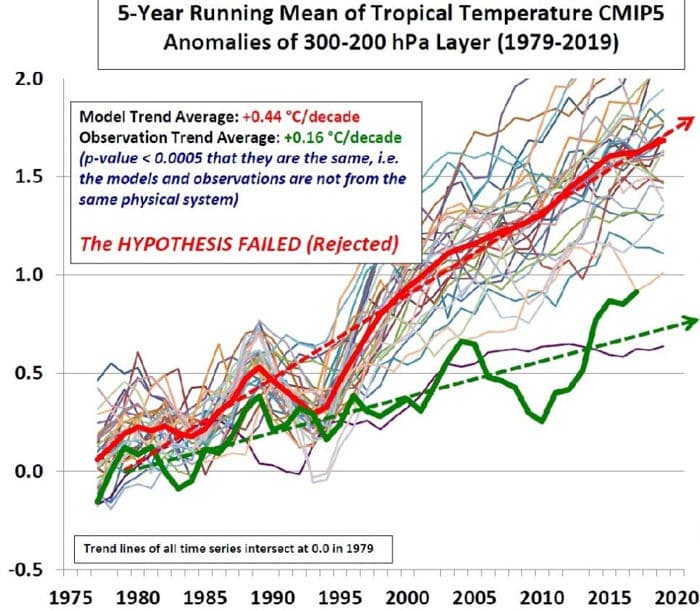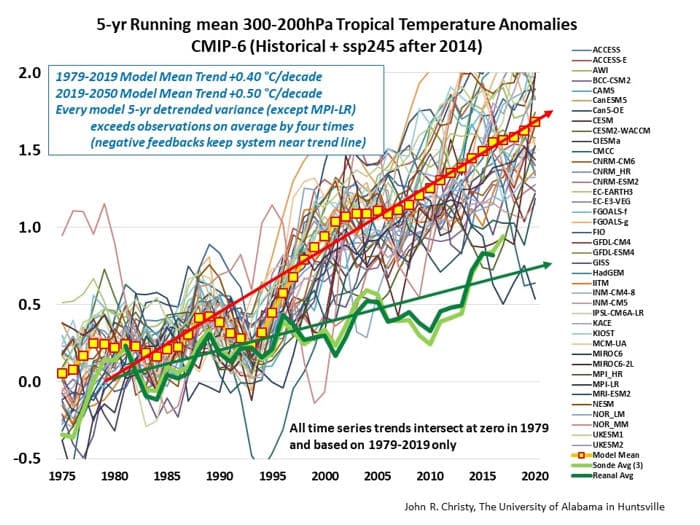Much has been written about the tendency of current climate models to overestimate recent warming and thus their unfitness to accurately project future warming. The graphs below, prepared by Dr. John Christy, illustrate this tendency for the CMIP5 and CMIP6 model ensembles.


Two points are obvious from these graphs. First, the large number of models produce very significantly varying future projections among themselves. Second, all but one of the models produce individual projections widely at variance from observations over the period. As Dr. Christy notes on the first graph above, “the models and observations are not from the same physical system”. Since the observations, though “adjusted”, are from the physical system we call earth, we can consider them to be near-real. This leads to the obvious conclusion that the model projections are not “real” for the physical system we call earth.
The “adjustments” to the near-surface temperature have characteristically reduced the measured temperatures, as shown in this blink comparator prepared by Tony Heller. This blink comparator deals only with the US, but clearly illustrates the reductions to historical raw data. This illustration shows increases to recent data, though that is now far less common as the result of the US Climate Reference Network. The US CRN produces data there is no reason to “adjust”, which makes “adjusting” other US temperature more problematic.
The history of negative “adjustments” to historical near-surface temperature data might represent a possible explanation for the tendency of climate models to over-project future temperatures. The climate models are typically “tuned” to historical temperatures through hindcasting. This also assures that there are no glaring errors in the function of the models. However, this “tuning” is done to “adjusted” temperature histories in which older temperatures have been reduced, resulting in a steeper temperature increase trend over the period of the temperature record. Therefore, the “tuned” models are tested against a temperature record which shows an artificially rapid increase in historical temperatures. The “tuned” models would then be expected to project an artificially rapid future increase in temperatures as an extension of the “adjusted” historical trend.
The CMIP5 models have progressively falsified themselves; that is: “The hypothesis failed.” The CMIP6 models also appear to be in the process of falsifying themselves. Both model ensembles projected future temperature increases over the 1979-2020 period approximately three times the observed temperature increases. They clearly do not form an acceptable basis upon which to dramatically revise the energy and economic structures of the nations of the globe at the cost of trillions of dollars.
The model projections are the sole basis for the concerns regarding a “climate crisis”, “climate emergency” or “existential threat” resulting from continued emissions of “greenhouse gases” resulting from human activity. The consensed climate science community has acknowledged that the models are “running hot”, that the situation is unacceptable and unsustainable, and that it must be addressed. The consensed climate science community has also acknowledged the need to establish a more accurate global near-surface temperature measurement network, similar to the US CRN.
It is long past time to end the climate science practice of Frantic Researchers Adjusting Unsuitable Data.


